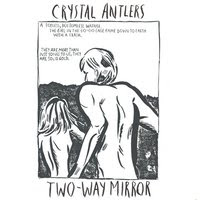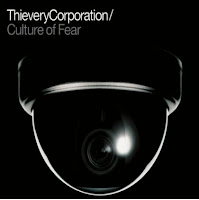
For Phish fans, no summer is complete without tour. Deer Creek, Alpine Valley, Camden. These are the vacation homes of fans throughout the summer months. So, when Phish announced a three-night run at the University of Chicago’s UIC Pavilion (the only Midwest, and indoor, shows of the tour), it immediately had the feeling of something special. Trey Anastasio, Page McConnell, Mike Gordon and John Fishman, returned to UIC for the first time since 1998, and treated fans to three nights of classic Phish.
Since returning from a (second) hiatus, which included a drug conviction and rehab stint for Anastasio, Phish have dedicated themselves to rebuilding that excellence that launched them to the top in the 90s, and each night of the UIC shows proved this. Below is a night-by-night recap, but for those not as interested in the specifics, know that for all of the pre-show hype (and ticket demand), Phish treated their fans, new and old, to an amazing run, displaying not only their unmatched talent but also their commitment to entertaining their fans. These shows truly had it all.
Night 1

Set 1: Back on the Train, Rift, Guelah Papyrus, Scent of a Mule, Jesus Just Left Chicago, Wolfman’s Brother, Anything But Me, Babylon Baby, Reba, Alumni Blues ->; Letter to Jimmy Page ->; Alumni Blues
Set 2: Sand ->; Light ->; Dirt, Waves ->; Undermind ->; Steam; Fire
Encore: Camel Walk, Guyute, The Horse ->; Silent in the Morning, Harry Hood
How is it all going to start? Will they start low and slow and build to an explosive climax at night three? With Phish, you never know, and we certainly didn’t
Night one brought the heat, in every sense of the word. From note one, the night rocked and rolled its way through peaks and valleys, all the while maintaining a momentum that left most gasping for air.
Save for the welcomed bathroom-break of “Anything But Me,” there wasn’t a weak song in the evening. “Wolfman’s” provided the first jam vehicle of the night, and this is one that they have really let go of in 3.0 Phish. Locked in and tight, the jam went three or four directions before circling back to the head. Mike’s “Babylon Baby,” off his third solo album Moss, provided the only debut of the evening and had a nice, peppy feel to it after the slow “ABM.” An homage to playing on UIC’s campus, a ripping “Alumni Blues”->;”Letter to Jimmy Page”->;”Alumni Blues” closed out the set and left everyone desperate for a breather…and water. (Holy steamin’ hot venue Batman!)

This 3.0 version of Phish has most decidedly included less experimentation and a greater focus on tightness and accuracy, and there is no doubt they have accomplished the latter…but, as of this night, the former too. Seven songs. Seven segues. Seven stratospherical jams that contradicted their earthbound titles. Each song of the night one second set ebbed and flowed with that wanderlust and freedom that many came to know (and expect) of Phish throughout the late 90s and early 2000s, tying it all up with the rage of Jimi Hendrix’s “Fire,” just to let you know who you’re talking to here.
Feeling that the more than two and a half hours of fun they had already provided wasn’t quite enough, the boys returned to the stage for the first five song encore in more than 20 years. See what happens when no one tells Trey about the curfew? So, clearly this was no typical encore. This was 35 minutes of “Camel Walk” funk, “Guyute” nastiness, “Horse”->;”Silent” dreamscape and “Harry Hood” jubilation. Woah. Didn’t see that coming.
Thank you and good night. Oh, and see you tomorrow.
Night 2

Set 1: Dinner and a Movie, Ha Ha Ha, Chalk Dust Torture, Mexican Cousin, Walls of the Cave, Runaway Jim, Foam, I Didn’t Know, Ocelot, Ginseng Sullivan, The Wedge, Limb By Limb, Let It Loose
Set 2: Down with Disease ->; Twist ->; Backwards Down the Number Line, Theme From the Bottom, Golden Age ->; A Day in the Life, You Enjoy Myself
Encore: Heavy Things, Slave to the Traffic Light, Rocky Top
So, what to do now? I mean, you’re not supposed to START a three night run with such a burner. How can you possibly live up to that? Well, maybe night two of UIC wasn’t quite the stellar performance from night one, but that doesn’t take a single thing away from it. Night two’s first set featured a 13 song slew of classic Phish tunes spanning their repertoire, from “Dinner and a Movie” and “Foam” (Junta), “Chalk Dust Torture” (Picture of Nectar), “Mexican Cousin” and “Walls of the Cave” (Round Room), “Ocelot” (Joy), “The Wedge” (Rift), and “Limb by Limb” (Story of the Ghost), and covers of Norman Blake’s “Ginseng Sullivan” and the Rolling Stones’ “Let it Loose”, the set almost covered the bands entire history, from old to new. And while the set didn’t feature much in the way of jams, it did showcase the bands compositional chops and demonstrated their commitment to, once again, playing tight and precise.
To be expected after last night, set two loosened up and dove right into experimentation with a stellar 21+ minute “Down with Disease.” Dipping their toes back into the inventive waters of night one’s second set, “Disease” took them and us on a psychedelic free-fall before perfectly segueing into an unexpectedly deep “Twist.”
The remainder of the second set offered some pep and vigor and was appropriately capped off with a stellar “You Enjoy Myself.” Start to finish, this “YEM” gave it all. The post-trampoline deep funk lead to a raging peak and closed with a tight and purposeful vocal jam.
Again, it was hard to beat the five song encore (third set?) from Monday night, and with “Heavy Things” they clearly weren’t trying to. But a smooth and defined “Slave to the Traffic Light” certainly was a welcomed treat, and just try not to smile during “Rocky Top.”
So, for those at home keeping score, we have a ballgame here. Night one is still in the lead after a solid and upstanding night two. How will the trilogy end though? Give me a few hours and I’ll tell you.
Night 3

Set 1: Colonel Forbin’s Ascent > Fly Famous Mockingbird, Gumbo, Possum, Weigh, The Divided Sky, Alaska, Bathtub Gin, Maze, Cavern, First Tube
Set 2: Crosseyed and Painless -> No Quarter -> Timber (Jerry) -> Tweezer -> Prince Caspian -> Piper -> Ghost -> Makisupa Policeman, Sleep, Buffalo Bill, Golgi Apparatus , Character Zero, Run Like an Antelope
Encore: Funky Bitch, Show of Life , Tweezer Reprise
Alright, so here we are. Walking into the third and final night of what quickly became a very special Phish run in Chicago, all of the talk seemed to be not so much around what they would play, but what they could. Even after the incredible song selections of the previous two nights, still many gems laid out there for the taking. They hadn’t even touched any of the Gamehenge classics…that is until note one of tonight’s first set. Setting off with “Col. Forbins “->”Mockingbird” gave the impression that the boys might continue to dig deep into their repertoire. Instead, the rest of the set fell back into the more typical song selection of 3.0 Phish. However, the execution was just as spot on as the previous nights, highlighted by a raging “Maze” featuring outstanding solos from Page and Trey, and the always high-energy “First Tube.”
Ok, but how would it all end? We have experienced five incredibly solid sets of Phish that all offered quite a bit, even for the most hardened of fans. There’s been hard rock, spacey jams, short tunes, long tunes, old tunes and new tunes, all of which were executed with the rigor that drew fans to Phish in the first place. So, how would it all end? Would they set into orbit or keep with the high energy of the first set? As it turns out, they chose both.

Starting with a trio of covers, The Talking Head’s “Crosseyed and Painless” is always a welcome set two opener. Typically a launch pad for exploratory jamming, tonight’s stayed a little closer to the frame, with Trey leading the way before transitioning into Phish’s newest and best cover, Led Zepplin’s “No Quarter.” McConnell’s Rhodes and vocal work make this a natural fit for Phish’s large collection of covers. “Timber (Jerry)” also stayed a little closer to the chest as opposed to its typical dissonant and atonal jam.
It’s from here that the set started to become a little disjointed and random. “Tweezer” kept the energy high, but “Prince Caspian” quickly dropped it down. “Piper” brought it back up, and what has to be the shortest “Ghost” on record almost instantly, and somewhat disappointingly, dropped into “Makisupa.” The remainder of the set was a mix of ups and downs through some of the band’s shorter songs, more typical of those expected in a first set. “Character Zero” and “Antelope” definitely ended things on a rockin’ note, but seemed to leave people wondering how to feel. And after two stellar encore performances from the previous two nights, it’s not surprising that the “Funky Bitch,” “Show of Life,” “Tweeprise,” while fine choices, felt a little anti-climactic.
And so…
No matter what people say about this latest version of Phish, one thing that is hard to do is complain. Most fans feel lucky enough that they are even able to see the band perform live, and when they do, they are most often treated to the Phish that they hoped for. Each member of the band is contributing on an individual and collective basis. There is tightness, accuracy and yet still freedom in every tune. And for those that were lucky enough to catch all three UIC shows, we saw this in spades. Every single aspect of Phish was present: face-melting solos, fitting covers, wide-open jamming, thoughtful song selection and, even a touch of Phish humor. And while night one of this run definitely comes out on top, each show is great on its own. Worth the downloads? Yes. Worth seeing the next time they come through your town? Absolutely. And most importantly, UIC was worth the hype.
And now, if you’ll excuse me, there’s a pillow somewhere that’s calling my name.
 Sure, The Spirit of Christmas didn’t come out until the mid-80’s, but that’s no reason for it to not be a classic. In fact, I would argue it deserves a spot right up there with the rest. First of all, it’s Ray f-ing Charles we’re talking about here. You know it’s going to be good. Second, he doesn’t just dial it in, half-assing the same old tired tunes you would expect. Yeah, there’s some traditional ones like “Drummer Boy,” “Rudolph” and “Winter Wonderland,” but there’s also the much lesser-knowns like “This Time of the Year,” “That Spirit of Christmas,” “All I Want for Christmas,” and “Christmas in My Heart.” And regardless of if their popularity, every track has that great Ray Charles flair that seems to span generations. Take “What Child Is This?” for example. It starts true to its “Greensleeves” roots, but just a minute and a half in, he double-times the tempo and turns it into a big band, swing tune, almost entirely abandoning the main theme.
Sure, The Spirit of Christmas didn’t come out until the mid-80’s, but that’s no reason for it to not be a classic. In fact, I would argue it deserves a spot right up there with the rest. First of all, it’s Ray f-ing Charles we’re talking about here. You know it’s going to be good. Second, he doesn’t just dial it in, half-assing the same old tired tunes you would expect. Yeah, there’s some traditional ones like “Drummer Boy,” “Rudolph” and “Winter Wonderland,” but there’s also the much lesser-knowns like “This Time of the Year,” “That Spirit of Christmas,” “All I Want for Christmas,” and “Christmas in My Heart.” And regardless of if their popularity, every track has that great Ray Charles flair that seems to span generations. Take “What Child Is This?” for example. It starts true to its “Greensleeves” roots, but just a minute and a half in, he double-times the tempo and turns it into a big band, swing tune, almost entirely abandoning the main theme.





























